We offer medical detox and multiple addiction treatment options in our
luxury treatment centres in Port Hope, Cobourg, and Ottawa.
How Household Products Can Become Abused Substances
Overview
Society’s understanding of addiction implies a reliance on alcohol, or drugs like marijuana, heroin, methamphetamines, cocaine, or Ecstasy. A quick look around any home, however, will reveal a host of everyday household items that have the same potential for abuse as drugs and alcohol.
Ingesting everyday items such as glue, aerosol cleaning fluids, whipped cream, moth balls, nutmeg, bath salts, hand sanitizer and over the counter medications, like cough syrup and motion sickness pills, can produce a sense of well-being, or euphoria, that is highly addictive.
It is also extremely dangerous. Depending on the substance, or combination of substances, consuming these household products even once can cause slow heart rate and breathing, clogged lungs and asphyxiation, cardiac arrest, hallucinations and delusions, seizures, a coma, brain damage and sudden death.
They are often taken with alcohol or other drugs, making the potential risks even greater.
Addiction to these household items is becoming more widespread, though under-reported, because they are so readily available, relatively inexpensive and legally obtainable, and they seem harmless. This also makes them particularly appealing to adolescents. As a result, researchers are focusing more on abuse of common household products, and the associated impact on health.
Due to the influence of their peers and the impulsive decision-making characteristic of many young people, adolescents are at particular risk for this type of substance abuse. They are also more likely to experiment with combinations of substances, and with other drugs, as well as with new ways to consume the items, making their use more perilous.
Inhalants
Inhalants are volatile chemicals found in countless products like aerosol cans, glue, cleaning fluids and spray paint. In order to become intoxicated, inhalant abusers concentrate the vapors, or pressurized gases, and breathe them in through the nose or mouth. Other ingestion methods, which include huffing, bagging, and sniffing, are used to intensify the effects of the drug.
Types of Inhalant
Solvents
Solvents are one form of inhalants. They include gasoline, kerosene, contact cement, model glue, paint thinners, and nail polish remover. Any ingestion method can be used with those solvents. Ethanol, or grain alcohol, can be converted into a vapor and inhaled. A nebulizer, a machine originally intended to treat asthma, cystic fibrosis, COPD and other respiratory diseases, is often used.
Depending on the solvent and the amount consumed, effects range from what appears to be mild alcohol intoxication to slurred speech, severely impaired motor perception, hallucinations and emotional disturbances. Many users experience headaches, nausea, vomiting and wheezing.
Over time, the user’s clothes, skin, breath and perspiration may develop an odour. Another sign of solvent abuse is a rash around the nose and mouth, colloquially referred to as “glue-sniffer’s rash”.
According to the National Institute on Drug Abuse (NIDA), a single use of solvents can disrupt heart rhythms and reduce the amount of oxygen getting to the brain, leading to death in a matter of moments. Prolonged use can cause permanent brain damage, and damage to the heart, liver and kidneys.
Nitrites
Nitrites are found in room deodorizer, video head cleaner, liquid aroma, and products used to clean electronics. They are also in nitrous oxide, a drug that has been classified as a dissociative anaesthetic. It can produce a sense of dissociation of the mind from the body, or a sensation of floating, as well as distorted perceptions and hallucinations.
Nitrous oxide, commonly known as laughing gas, is used in dental offices as a sedative. Used by a professional, for its intended purpose, it is a safe and effective way for patients to relax during medical and dental procedures. However, it is often abused, largely due to the euphoric feeling it produces. Like other inhalants, this effect is very short-lived, lasting for only a few minutes, which leads to repeated abuse and increased risk from side effects.
Whipped cream aerosols, butane lighters, propane tanks, and refrigerant gases, are all non-medical uses of nitrous oxide that are inexpensive and easily obtained. It is also used by the automotive industry to enhance engine performance.
Short term effects of this kind of inhalant abuse include blurry vision, dizziness, confusion, feeling unusually tired or weak, loss of blood pressure, fainting, heart attack, and sudden death. Prolonged use can result in psychological dependence, memory loss, incontinence, a weakened immune system, depression, psychosis, and damage to reproductive systems, including birth defects if consumed during pregnancy.
A common use of nitrites is to enhance sexual performance and experience. Because they are used in this context, they are associated with unsafe sex practices and increased risk of contracting sexually transmitted diseases, HIV/AIDS, and hepatitis.
Ingestion Methods
Huffing
Inhalants like room deodorizer, whipped cream dispensers, also known as whippets, and aerosol cleaning fluids, are breathed, or huffed, into the lungs either by spraying them into the nose, or soaking a rag and holding that up to the face, or placing it in the mouth.
Like alcohol intoxication, huffing causes impaired judgement and motor function. Unlike alcohol, inhalants produce a hallucinatory state that is highly addictive, but short-lived, lasting only 10-15 minutes. This leads to repeated use and increases the likelihood of side effects and death.
Bagging
Bagging involves spraying the inhalant into a plastic bag, and then inhaling the vapors. The bag is either held up to the mouth or placed over the head, both of which are very dangerous, but the latter creates an increased risk of suffocation. Along with the brain damage and heart failure associated with any use of inhalants, bagging adds this additional layer of peril.
This method can be used to ingest virtually any spray inhalant. An indication of this form of inhalant abuse is an accumulation of plastic or paper bags, and empty aerosol cans
Sniffing
Sniffing involves placing the addictive substance, such as markers, correction fluid, or nail polish remover directly next to the nostril and inhaling sharply. This is also known as snorting, and often results in scabs or small scars near the nose, as well as nosebleeds and the loss of smell.
Sudden Sniffing Death Syndrome (SSDS) can occur very quickly, without warning, and with the first use. A lack of oxygen to the brain occurs as a result of ingesting the inhalant. This causes hormones to be released that are supposed to help the body react. Instead, they increase the heart rate, leading to cardiac arrest and death.
Orally Ingested Items
Nutmeg
Not unlike the discovery of opium in poppy seeds, nutmeg has its own ingredient that has captured the attention of addiction researchers. Myristicin is a natural organic compound present in the essential oil of nutmeg. While acting as a pesticide, it is also a powerful psychoactive that can cause delirium and a hallucinogenic state that can last several days.
Nutmeg addiction has been prevalent at different times throughout history. The highest levels of nutmeg abuse occurred in the 1900’s, the 1960’s and today. There has been a resurgence of nutmeg abuse in recent years.
It is readily available, relatively inexpensive and produces effects similar to that of peyote, making it especially appealing to young people wanting to experiment.
Both nutmeg and peyote affect the central nervous system, which is extremely serious. This can cause euphoria, giddiness, anxiety, visual, tactile and auditory hallucinations, apprehension, detachment, dizziness, headache and drowsiness. Taken in large enough amounts, nutmeg poisoning can occur, resulting in organ failure and death.
Over the Counter (OTC) Medications
Cough syrup, cold tablets, weight loss remedies, and motion sickness pills all have the potential for abuse. Because they are sold at a pharmacy, without a prescription, the assumption is that they are safe. As a result of this assumption, they are used more frequently, in larger dosages, and in potentially dangerous combinations with other drugs.
These medications, which can also be ordered online, have the same mind-altering properties as illegal drugs when taken in large enough doses, and not as intended. This makes them highly addictive, and continued abuse will lead to grave medical consequences, including overdose and death.
Combining these with alcohol or other drugs dramatically increases these risks.
Dextromethorphan (DXM)
The active ingredient, dextromethorphan (DXM), found in most OTC cough syrups, such as Robitussin, Benadryl and Nyquil, can cause psychoactive effects, particularly if it is combined with alcohol or other drugs. These effects include dizziness, hallucinations, coordination problems, impaired judgement, slurred speech, seizures, nausea and vomiting, and are potentially fatal.
DXM can produce a dissociative state, or an out of body feeling, similar to PCP or ketamine (Special K), and addiction can occur very quickly because the effects are so powerful. This state can last several days, unlike intoxication from some inhalants that only lasts 10 -15 minutes, and is accompanied by intense cravings for more.
Addiction to products like Robitussin has been an issue since the 1960’s, but health officials have done little to address it. These medications are so readily available and inexpensive, and seem so harmless, that young people are abusing them at disproportionately high rates.
They are also popular among individuals already being treated for another type of drug addiction, as DXM cannot be detected by traditional drug tests.
Pseudoephedrine
Pseudoephedrine is found in cold medications, and is used to relieve symptoms associated with colds, allergies and hay fever. These products are so widely abused that regulations around their use were implemented, including storage of the drugs behind the pharmacist’s counter, and in some areas, limits to the amounts that can be purchased.
Illegal production of methamphetamines from pseudoephedrine pills was the reason for the implementation of these restrictions. Abuse of pseudoephedrine continues due to its euphoria-generating properties, and in spite of the serious health consequences associated with its use. These include weakness, dizziness, stomach pain, nausea, vomiting, breathing problems, irregular heartbeat, overdose, and death.
Ephedrine
Ephedrine is a stimulant that affects the central nervous system, and its use can stress the heart and increase the blood pressure. It was the primary ingredient in various diet pills until its use for this purpose was banned by the Food and Drug Administration (FDA) in the United States in 2004.
Investigators found that evidence was lacking to support the effectiveness of ephedrine as an aid in weight loss, and that, in fact, use in that format could have serious medical consequences, including an increased risk of death.
In spite of ephedrine being banned for use in diet pills, people continue to abuse it. In 2011, the FDA seized a huge shipment, and it is still available for purchase on multiple websites. Ephedrine is also found in asthma medications, such as Bronkaid and Primatene, and these are misused by individuals looking for a weight loss supplement.
Ephedrine is often used as a substitute for Ecstasy, an illegal drug that has stimulant properties. It can cause hallucinations, confusion, severe anxiety, paranoia and psychotic behaviour.
Motion Sickness Pills
Medications like Dramamine, containing antihistamines, are completely safe when used as directed, and can be effective in treating motion sickness. However, when abused, they produce mild euphoric sensations and relaxation. In higher doses, they can cause hallucinations similar to those produced by LSD and mushrooms. These effects, coupled with ease of access and low cost, make them highly addictive.
Abusing motion sickness pills can result in convulsions, stomach pain, dizziness, nausea, vomiting, jaundice, sudden impairment of liver function, and loss of consciousness.
Prescription Drugs
Prescription drug abuse can include the use of medication prescribed to someone else, failure to follow the instructions regarding dose and frequency, and non-medical use. The most often abused drugs are opioid pain relievers, anxiety medications, and sleeping pills. There has been a sharp increase in this type of drug abuse in recent years.
Prolonged abuse of prescription drugs can lead to addiction to these medications. Opioid use disorder is dependence on, and/or misuse of, opioid painkillers such as oxycodone (OxyContin), fentanyl, and meperidine (Demerol).
Benzodiazepines are tranquillizers. Xanax and Valium are popular brands of this drug, which is typically used to treat anxiety and insomnia. Benzodiazepines abuse is addiction to, or misuse of, these medications.
Barbiturates are a class of drugs known as sedative-hypnotics, also prescribed for anxiety and insomnia. Finding the correct dosage is very challenging, which makes barbiturates dangerous because the slightest overdose can cause coma or death, even after first time use. They are highly addictive, and discontinuation is extremely difficult and potentially fatal. Detox only be attempted under close supervision of a medical professional.
Treatment
Treatment for addiction to household items includes therapy, counselling, and medications to manage withdrawal symptoms and any related medical conditions. Whether the problem is prescription or over-the-counter drug abuse, or use of inhalants, the involvement of a health care practioner is essential.
Sources used for the article
- Inhalant Use
BC Health Links: Health Wise Staff, Current as of October 9, 2017 - DrugFacts: Inhalants | National Institute on Drug Abuse (NIDA)
Revised February 2017 - What is Huffing?
McGill University, Office for Science and Society, March 20, 2017 - DrugFacts: Over-the-Counter Medicines | National Institute on Drug Abuse (NIDA)
Revised December 2017 - Can You Get High on Nutmeg? Why This Isn't a Good Idea
Healthline, August 30, 2018 - Picture Credit: Reuters Reckitt to Pay $1.4 Billion to End U.S. Opioid Addiction Treatment Probes





